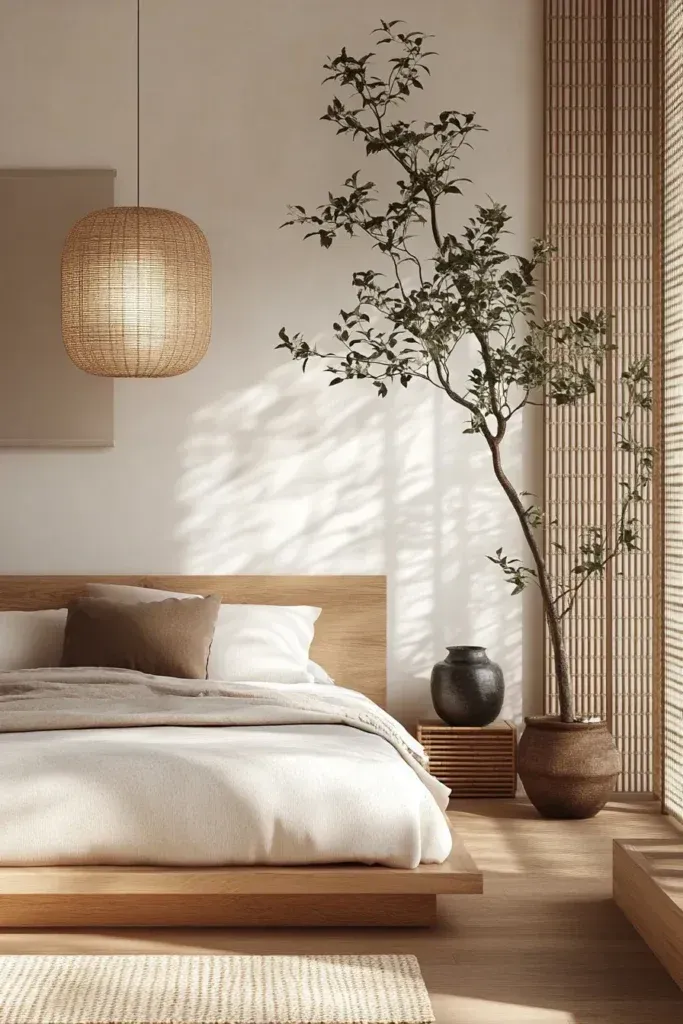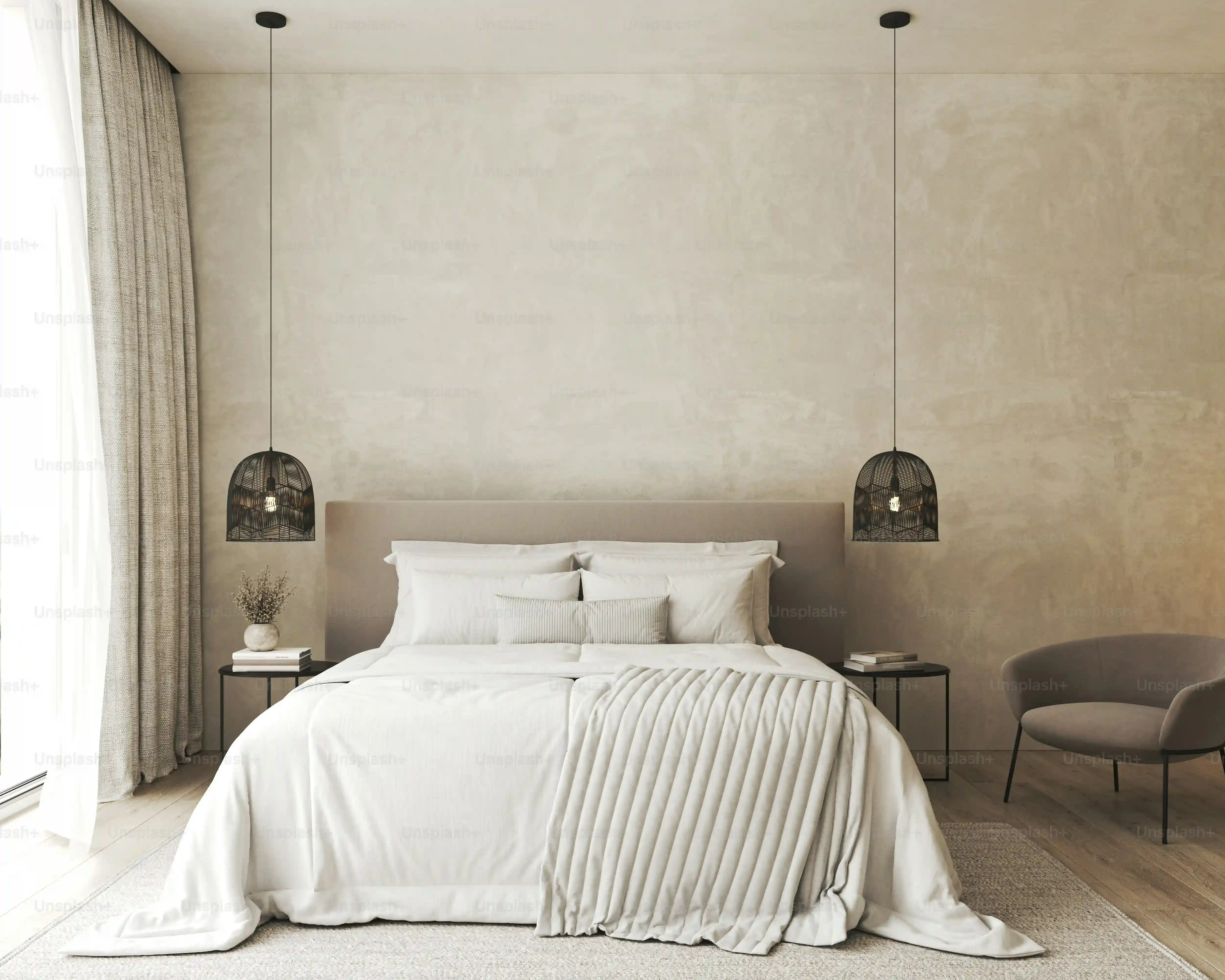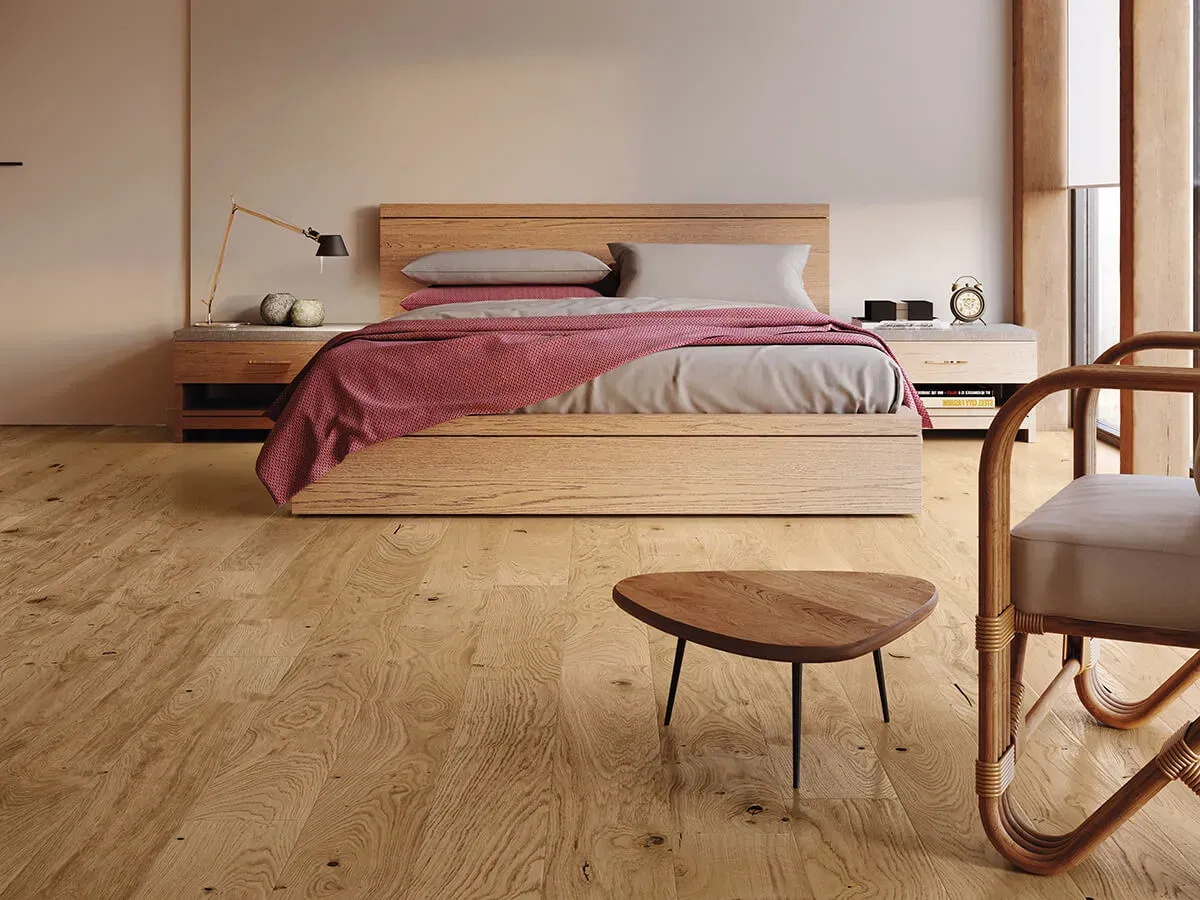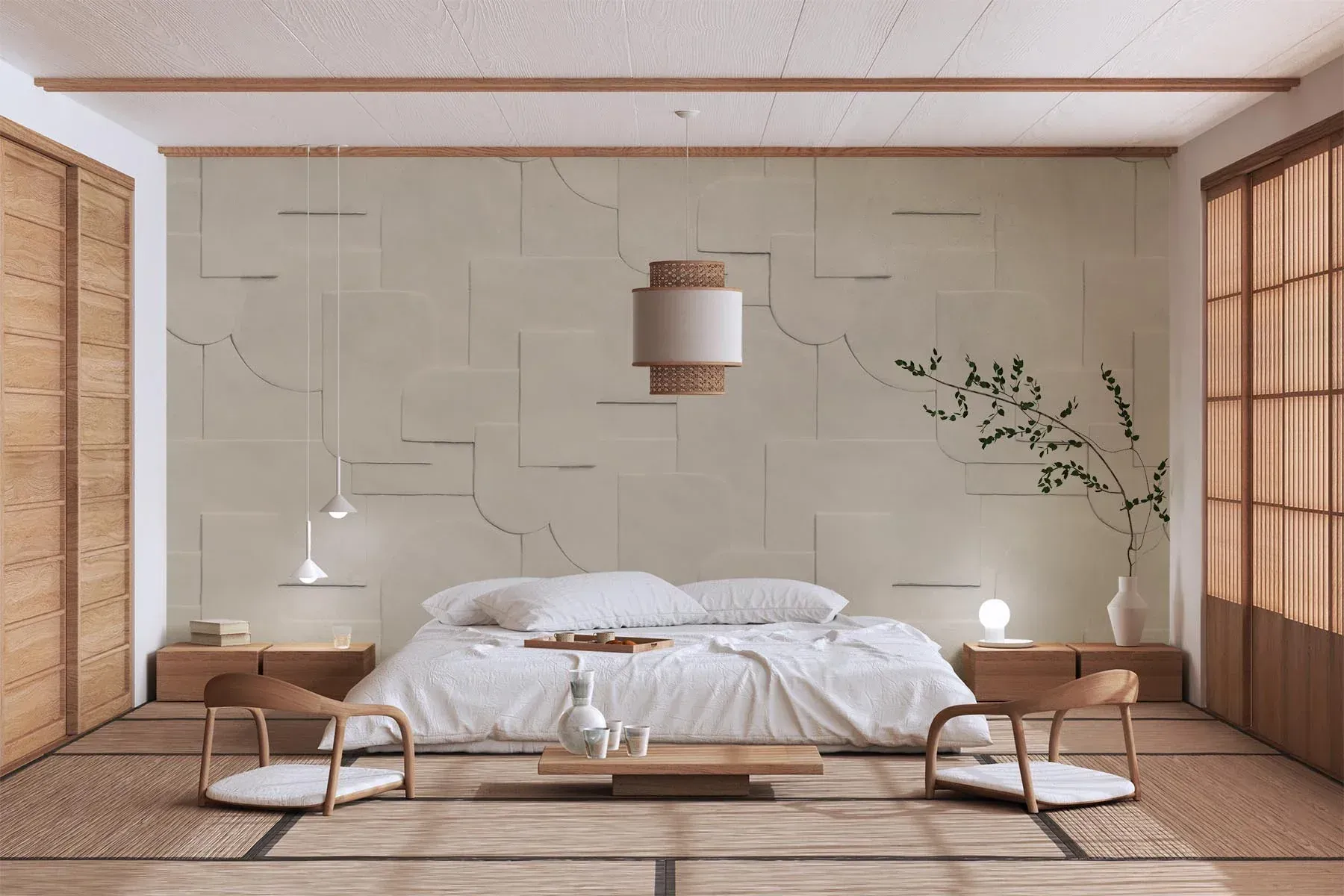Table of Contents
Let's be honest, most bedrooms end up as chaotic dumping grounds for laundry, forgotten books, and that one piece of exercise equipment you swear you'll use someday. The idea of a serene, calm space feels like a distant dream, not a reality. But what if you could strip away the visual noise and create a sanctuary that actually helps you unwind? Enter Japandi style – the thoughtful fusion of Japanese minimalism and Scandinavian warmth. It’s less about filling space and more about curated calm.
Understanding the Japandi Aesthetic for Your Bedroom
Understanding the Japandi Aesthetic for Your Bedroom
More Than Just Beige and Wood
Forget the fluffy, overstuffed look. Japandi isn't some trendy Pinterest board full of beige blankets and potted plants (though those might appear). It's a deliberate design philosophy, a handshake between Japanese minimalism and Scandinavian practicality. Think of it as finding the sweet spot where serene simplicity meets cozy comfort, specifically tailored for the place you’re supposed to rest and recharge. It's about stripping away the excess, keeping only what serves a purpose or brings genuine peace. In your bedroom, this means every piece of japandi bedroom furniture pulls its weight, contributing to a quiet, uncluttered atmosphere rather than just filling a corner.
The Building Blocks of Bedroom Calm
So, what does this look like in practice? It starts with a muted color palette – soft whites, grays, blacks, and earthy tones like terracotta or deep greens. You won't find jarring brights here. Materials are key: natural, tactile textures dominate. We're talking unfinished or lightly finished wood, bamboo, rattan, linen, wool, and ceramics. Lines are clean, often low to the ground, reflecting a connection to nature and a sense of groundedness. Clutter is the enemy; storage is discreet and functional. It's about quality over quantity, choosing pieces that are well-made and built to last, embodying the Wabi-Sabi principle of finding beauty in imperfection and transience.
Here are some elements you'll typically find:
- Low-profile beds
- Minimalist nightstands
- Tatami mats or natural fiber rugs
- Simple, functional storage (cabinets, drawers)
- Natural light emphasized
- Subtle, diffused artificial lighting
- Limited, carefully chosen decor items
Creating a Sanctuary, Not a Showroom
The goal with japandi bedroom furniture and the overall aesthetic isn't to create a sterile, museum-like space. It's to cultivate a feeling. A sense of calm, mindfulness, and sanctuary. It’s the quiet satisfaction of a well-made wooden frame, the soft feel of linen bedding, the absence of visual noise that lets your brain actually switch off. It’s about making your bedroom a deliberate retreat from the constant demands of the outside world. When you walk in, you should feel your shoulders drop a little, ready to breathe deeply. It's a space designed for rest, reflection, and genuine relaxation, built on intentional choices about the furniture and elements you allow within its walls.
Key Features of Authentic Japandi Bedroom Furniture
Key Features of Authentic Japandi Bedroom Furniture
Built from the Earth, Shaped by Hand (or Machine)
When you're looking at japandi bedroom furniture, the first thing that should grab you isn't flashy design, it's the stuff it's made from. We're talking natural materials, plain and simple. Think solid wood – oak, ash, pine, sometimes bamboo. It's often lightly finished, maybe just a clear coat or oil, letting the grain show through. No thick, glossy varnishes here. You'll also see rattan, paper cords, and sometimes even ceramic elements in things like lamp bases or small decorative pieces. The idea is to bring the outside in, using materials that feel honest and grounded. Fake wood veneers? Hard pass. Particleboard covered in laminate? Get out of here. Authentic japandi bedroom furniture feels solid, durable, and connected to the natural world, even if it was assembled in a factory.
Form Follows Function, Quietly
Beyond the materials, the form of japandi bedroom furniture is key. It's clean, minimalist, and often low to the ground. This isn't just a stylistic choice; it's rooted in traditional Japanese design, promoting a sense of being grounded and closer to the earth. Beds are platform style, often with little or no headboard. Nightstands are simple boxes or small tables. Storage pieces are streamlined, often handle-less or with subtle integrated pulls, designed to blend in and hide clutter, not showcase it. There's very little ornamentation. No fussy carvings, no decorative finials, no unnecessary embellishments. Every line has a purpose, every curve is subtle. If a piece of furniture screams for attention, it's probably not Japandi. It whispers.
So, what should you look for specifically?
- Solid, natural wood (oak, ash, pine, bamboo)
- Low-profile designs, especially beds
- Clean lines, simple geometric shapes
- Minimal to no decorative elements
- Integrated or subtle handles on storage
- Visible grain or texture of the material
- Sturdy, durable construction
Choosing Your Essential Japandi Bedroom Furniture Pieces
Choosing Your Essential Japandi Bedroom Furniture Pieces
Starting with the Foundation: The Bed
Alright, let's talk about the absolute core of any bedroom: the bed. For a Japandi space, this isn't just a mattress holder; it's often the largest piece of japandi bedroom furniture and sets the tone. You're generally looking for something low-profile. Think platform beds that sit close to the floor, or simple frames with minimal headboards – maybe just a clean wooden panel. The idea is groundedness, a visual calm that doesn't dominate the room with height or bulk. Materials? Stick to solid wood. Oak, ash, or even a nice quality pine with a natural finish works. Avoid anything upholstered unless it's a very simple, natural fabric in a muted color. This piece needs to feel solid, understated, and like it belongs there, not like it was airlifted in from a baroque palace.
Nightstands and Storage: Quiet Companions
Once the bed is sorted, you need somewhere to put your book, a glass of water, or maybe that one essential item you need close by. Japandi nightstands are typically small, simple, and functional. A minimalist cube, a tiny table with slim legs, or a floating shelf. They aren't meant to be statement pieces; they are support staff. Again, natural wood is the go-to. For storage, the goal is to make it disappear. Look for dressers or cabinets with clean lines, flush fronts, and integrated or very subtle handles. Think Shaker simplicity but with an Eastern edge. These pieces of japandi bedroom furniture should provide necessary function without adding visual clutter. Open shelving is usually kept to a minimum and only for carefully curated items, not random junk.
When selecting these pieces, consider:
- Does it serve a clear purpose?
- Is it made from natural, durable materials?
- Are the lines clean and simple?
- Does it contribute to a feeling of calm, not chaos?
- Can it hide clutter effectively?
Beyond the Basics: Adding Functional Comfort
You don't need much else, frankly. The beauty of Japandi is its restraint. But if space allows and it serves a genuine need, consider a simple bench at the foot of the bed or a single, comfortable chair in a corner for reading. These should echo the material and color palette of your main japandi bedroom furniture – wood, natural fibers, muted tones. A simple, low-profile chest of drawers might be necessary for clothing storage if your closet is lacking. The rule here is strict: if it doesn't add function or a specific, calming aesthetic purpose, it doesn't belong. Every piece should earn its spot in your serene sanctuary, reinforcing the uncluttered, peaceful vibe you’re cultivating with your chosen japandi bedroom furniture.
Styling Your Space with Japandi Bedroom Furniture and Decor
Styling Your Space with Japandi Bedroom Furniture and Decor
Layering Texture, Avoiding Fluff
So you've got your beautiful, minimalist japandi bedroom furniture in place – the low bed, the simple nightstand, maybe a sleek dresser. Now comes the part where you make it feel like a place you actually want to spend time, not just admire from a distance. This is where textiles become your best friend. Think layers, but not the kind that bury you. We're talking about bringing in warmth and texture without adding visual chaos. A simple linen duvet cover, maybe a chunky knit throw in a muted tone tossed casually on the bed. A natural fiber rug – wool, jute, or sisal – underfoot adds warmth and defines the space. The key is quality over quantity and sticking to that serene color palette. It’s about touch and feel as much as look. That cheap polyester throw? Leave it at the store. You want things that feel good against your skin and look like they came from the earth, not a petrochemical plant.
Light and Life: Beyond the Bare Bulb
Lighting in a Japandi bedroom is crucial for setting the mood. Harsh overhead lights? Absolutely not. You want soft, diffused light. Think paper lanterns, simple ceramic lamps with fabric shades, or minimalist floor lamps that cast a warm glow. The goal is to create pockets of light, not flood the room. Natural light is king, so keep window treatments simple – sheer linen curtains or subtle blinds that let the sun filter in. And then there's life: plants. A few carefully chosen green friends can soften the clean lines of your japandi bedroom furniture and add a touch of nature. Don't turn it into a jungle; one or two well-placed plants in simple ceramic pots are enough. It’s about bringing in organic shapes and a sense of growth, contrasting with the structured furniture, but doing so with intention and restraint.
Consider these elements to enhance your space:
- Natural fiber textiles (linen, cotton, wool) for bedding and throws
- Simple, textured rugs (jute, sisal, low-pile wool)
- Soft, diffused lighting from multiple sources
- Minimalist lamps with natural materials
- One or two carefully selected houseplants in simple pots
- Subtle, meaningful art or ceramics on walls or surfaces
Where to Find Quality Japandi Bedroom Furniture
Where to Find Quality Japandi Bedroom Furniture
Navigating the Online Maze and Big Box Blues
so you've decided to ditch the clutter and embrace the calm with some proper japandi bedroom furniture. Great. Now, where do you actually find the stuff that isn't just beige particleboard masquerading as minimalist chic? The internet is awash with options, from massive online retailers promising everything under the sun to smaller, curated shops. The big players can be convenient, sure, but you often have to wade through a sea of questionable quality and "Japandi-inspired" pieces that missed the memo on solid materials and thoughtful design. Look for retailers that explicitly state the wood type, the finish used, and ideally, show clear photos of joinery or construction details. If the description is vague about materials, move on. Quality japandi bedroom furniture is an investment in tranquility, not a quick fix.
Digging Deeper for the Real Deal
Beyond the usual suspects, consider exploring furniture makers who specialize in solid wood, Scandinavian design, or even traditional Japanese styles. Sometimes, a piece isn't marketed specifically as "Japandi," but its clean lines, natural materials, and functional form fit the bill perfectly. Local woodworkers or custom furniture makers can be a fantastic, albeit potentially more expensive, option for truly unique and high-quality japandi bedroom furniture tailored to your space. Don't overlook vintage or antique shops either; you might find a simple, well-made dresser or a low wooden bench that just needs a little love to fit right in. The hunt is part of the process, and finding that perfect, understated piece feels genuinely rewarding.
Here are a few avenues worth exploring:
- Specialized minimalist or Scandinavian design online stores.
- Retailers known for solid wood furniture.
- Etsy or similar platforms for independent furniture makers.
- Local woodworkers or custom furniture shops.
- High-quality vintage or antique furniture stores.
- Brands with a focus on sustainable and natural materials.
More Than Just Furniture: The Japandi Bedroom Payoff
So, we've covered the essentials of bringing the Japandi aesthetic into your most personal space. It’s clear this isn't about simply buying a few pieces of "japandi bedroom furniture" and calling it a day. It's a deliberate approach to design that prioritizes peace over clutter, function over excess, and natural texture over synthetic flash. Getting your bedroom right in this style means making conscious choices about what you bring in and what you leave out. The payoff, if you manage it, is a room that feels less like a storage unit and more like an actual retreat – a place designed for rest, not just for sleeping.
